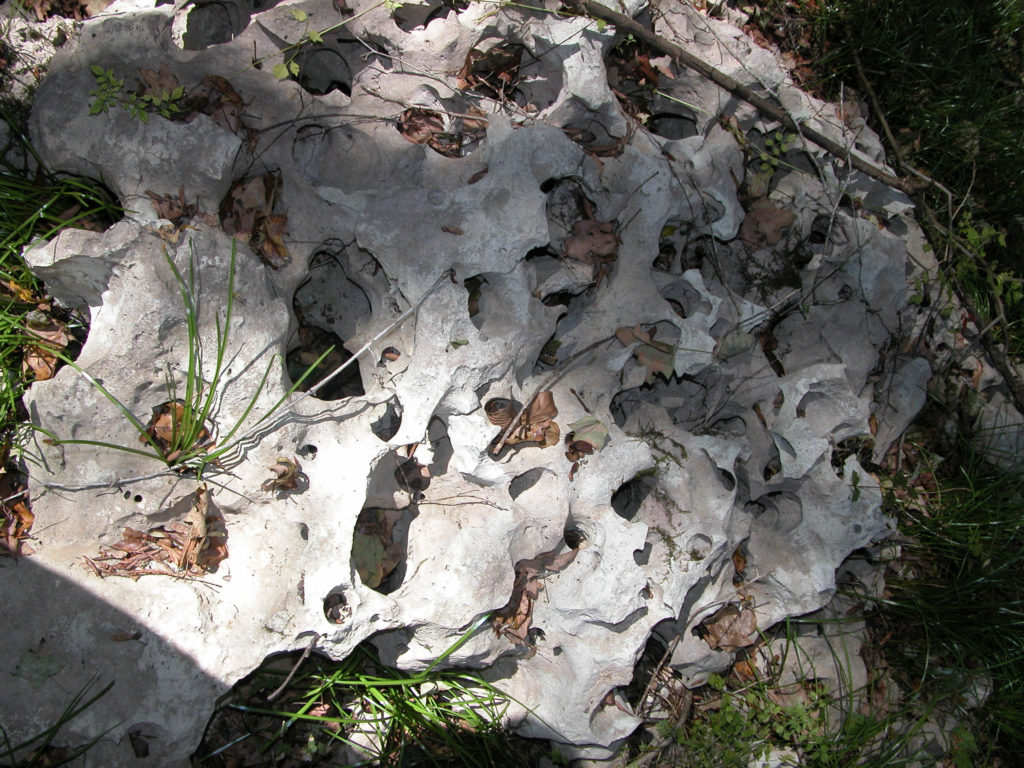
A Geologist's Perspective
by Harley Means
| YOUR QUESTION IS a complicated one since it is difficult to establish just when a river system first developed; however, I do have some insight for you.
The Ichetucknee River is probably several million years old; however, it has not been continuously flowing for that length of time nor has it always looked like it does now. There have been fossils recovered from both the Ichetucknee and Santa Fe rivers that are from the Pleistocene epoch (from 2.6 million to 11,700 years ago)—fossils that are several million years old. There are deposits of freshwater limestone exposed along the banks of the Ichetucknee that contain fossil vertebrates that are many tens of thousands of years old and represent a time when the water levels were higher than present.
So, the history of the Ichetucknee River is complicated and probably began millions of years ago as the process of dissolution (when limestone dissolves) eroded away some of the limestone bedrock to form void spaces that would later become sinkholes. Many of these sinkhole features actually develop along fractures and this may have been the case for the early Ichetucknee River.
Sea level has fluctuated greatly over the past 2.6 million years as massive continental glaciers advanced and retreated. When sea level was low enough to expose this part of Florida and the climate was wet enough to provide sufficient rainfall to raise the water table high enough to support spring flow, then the Ichetucknee River would flow. When sea levels were too high or the climate was dry, then the Ichetucknee River was a dry floodplain dotted with sinkholes.
I think we are safe in saying that the Ichetucknee River or the basin it occupies began forming millions of years ago, but only within the last 12,000 years or so has the Ichetucknee looked like it currently does. As climate and sea levels fluctuated in the past, so too did the Ichetucknee River. Sometimes it was a dry riverbed and other times it was a spring-fed river system.
Photos by Harley Means
